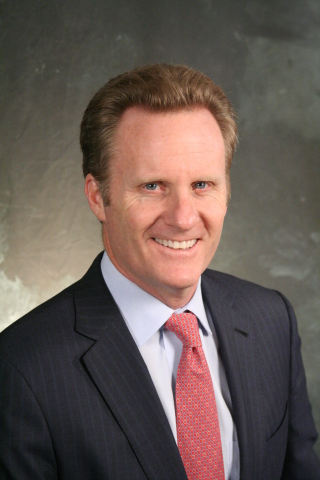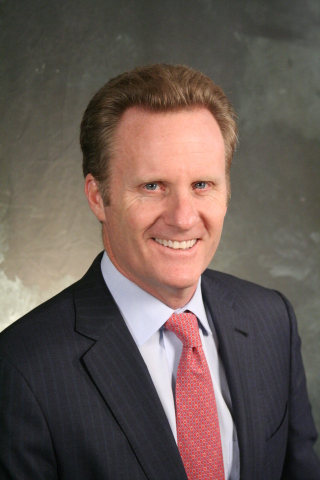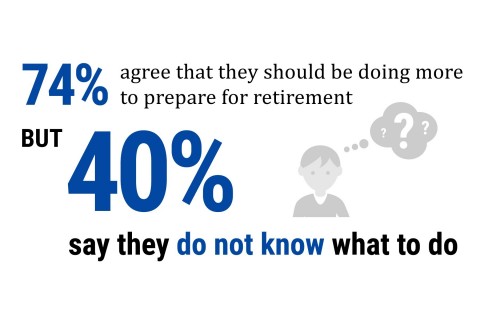NEWARK, N.J.--(BUSINESS WIRE)--Eighty percent of Americans say preparing for retirement is their top priority, according to a recent Prudential Investments survey measuring retirement readiness.i But when it comes to actually being prepared to retire, Americans, on average, grade themselves a “C” — and 12 percent even give themselves a failing grade.
Prudential Investments, the retail distribution business of PGIM, the global investment management businesses of Prudential Financial, Inc. (NYSE: PRU), remains among the industry’s fastest organically growing fund families, ranking among the top five between 2008 and the third quarter of 2016.ii The company managed $82 billion in assets under management as of Oct. 31, 2016.iii
“Understanding the hurdles keeping people from a secure financial future is critical to helping them meet their goals,” said Stuart Parker, president of Prudential Investments. “This research reinforces the need for people to seek advice and the need for the investment community to give advisors the best tools and solutions available.”
Highlights from the full survey can be viewed at Prudential Investments’ website.
Among the key findings of the survey:
-
Individuals find investment products complex and are unsure about
what they are invested in:
- Sixty-three percent of Americans find investing complex and confusing. Sixty-six percent say it’s harder to invest now than during their parents’ generation and 64 percent say they’re overwhelmed by the number of available choices.
- Forty-two percent of investors are not knowledgeable on how their assets are allocated within a portfolio, and 43 percent are not knowledgeable of which types of products they’ve invested.
-
Pre-retirees need a plan, but are frozen by inertia:
- Seventy-four percent of pre-retirees said they should be doing more while 40 percent simply don’t know what to do to prepare for retirement.
- While the savings estimate for retirement is more realistic for some pre-retirees, 24 percent estimating retirement needs of one million or greater, there is still a large gap — 54 percent of pre-retirees have less than $150k saved in their employer-sponsored plans.
-
Each generation is finding it harder to save:
- Seventy-five percent of retirees believe the generations following them will have a more difficult time saving for retirement. Younger generations agree: 20 percent of pre-retirees don’t believe they’ll ever be able to retire. Overall, 35 percent of pre-retirees say they’ll never be able to save enough, so it doesn’t matter when they start saving.
- Across generations, 57 percent of Americans say they would use savings to cover a financial emergency. Millennials often buck that trend — with 32 percent opting to borrow money from family and friends or 18 percent reporting that they would take out a bank loan.
-
Many retirees retired earlier than planned, and fear certain
factors could negatively affect their savings:
- Fifty-one percent of retirees retired earlier than planned. Of those who retired earlier, 50 percent retired five or more years earlier than expected.
-
Only 2 percent of the population retired earlier than planned
because they either wanted to retire or were tired of working. For
those who retired earlier than expected:
- Fifty-two percent retired early for health problems or to take care of a loved one.
- Thirty percent were laid off from their jobs or offered an early retirement incentive package.
-
Among the greatest fears that retirees believe could negatively
affect savings, the following rise to the top:
- Fifty-seven percent reported healthcare costs.
- Fifty-seven percent stated changes to Social Security.
- Forty-five percent reported illness or disability.
-
Individuals recognize the value of live advice, but less than half
use an advisor:
- The top source cited to learn about investing is a professional financial advisor, with 37 percent of Americans reporting this. However, only 44 percent reported using one.
- The second most cited source for information used is financial institutional websites, with 34 percent of Americans citing this.
- Interestingly, 17 percent rely on their employer and 14 percent of Americans don’t use any resources at all.
About the survey
The Retirement Preparedness Study was conducted using an online survey among 1,568 adults living in the United States (including 438 retirees) who met the following criteria:
- Age 21 and up
- Primary or shared responsibility in making household financial/investment decisions
- Employed full-time or part-time, self-employed, stay-at-home parent, or retired
The survey was conducted by Harris Poll on behalf of Prudential between July 20 and August 9, 2016. Results were weighted where necessary by age, gender, race/ethnicity, region, education, income, size of household, marital status, employment status (for non-retirees) and propensity to be online to bring them in line with their actual proportions in the population.
About PGIM and Prudential Financial
With 13 consecutive years of positive third-party institutional net flows, PGIM, the global asset management businesses of Prudential Financial, Inc. (NYSE: PRU), ranks among the top 10 largest asset managers in the world with more than $1 trillion in assets under management as of September 30, 2016. PGIM’s businesses offer a range of investment solutions for retail and institutional investors around the world across a broad range of asset classes, including fundamental equity, quantitative equity, public fixed income, private fixed income, real estate and commercial mortgages. Its businesses have offices in 16 countries across five continents. Prudential’s other businesses also offer a variety of products and services, including life insurance, annuities and retirement-related services. For more information about PGIM, please visit https://www.pgim.com. For more information about Prudential, please visit www.news.prudential.com.
i This is the net of a few responses: saving for retirement (58% Pre-retirees, 10% Retirees); having enough money to maintain my lifestyle throughout retirement (41% Pre-retirees, 68% Retirees); not running out of money in retirement (31% Pre-retirees, 59% Retirees); not becoming a financial burden to my loved ones in retirement (14% Pre-retirees, 41% Retirees).
ii Source: Simfund, as of Sept. 30, 2016, among top 50 U.S. mutual fund competitors between 2008 and 3Q2016.
iii Source: PGIM, Inc. (PGIM) as of Oct. 31, 2016. Prudential Investments’ AUM includes the open-end and closed-end funds, but excludes money market AUM.
Investing involves risks. Some investments have more risk than others. The investment return and principal value will fluctuate and the investment, when sold, may be worth more or less than the original cost and it is possible to lose money.
© 2016 Prudential Financial, Inc. and its related entities. The Prudential logo and the Rock symbol are service marks of Prudential Financial, Inc. and its related entities, registered in many jurisdictions worldwide.
0299422-00001-00





